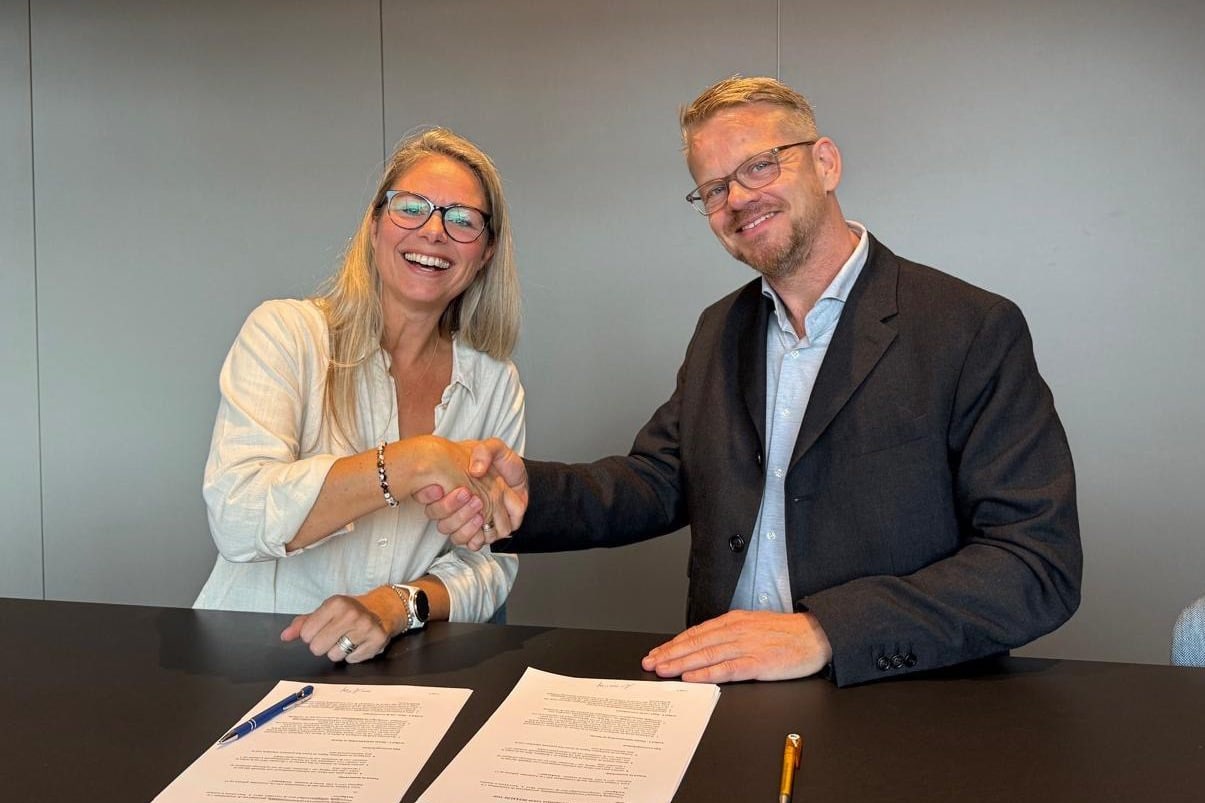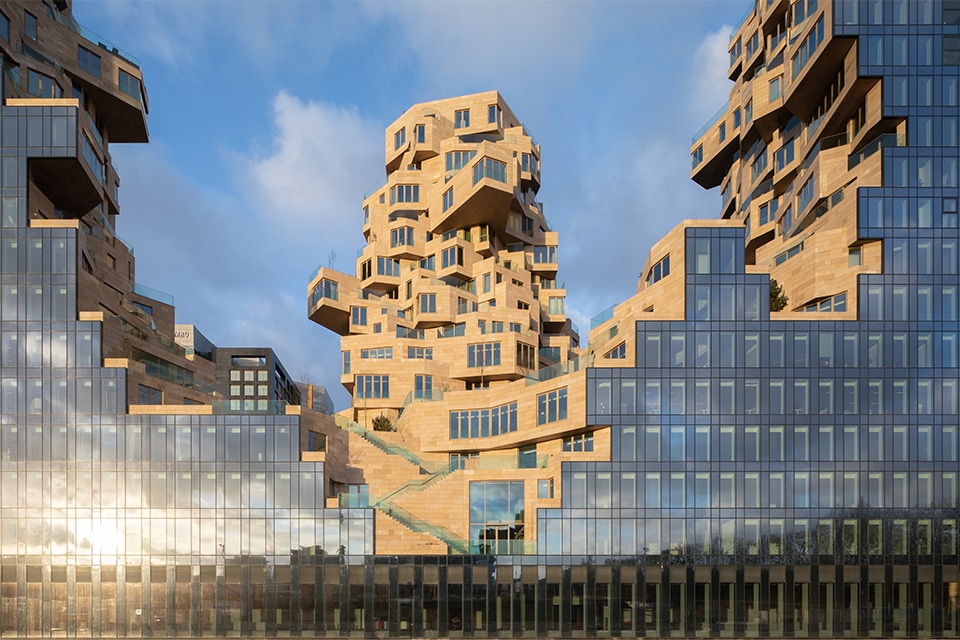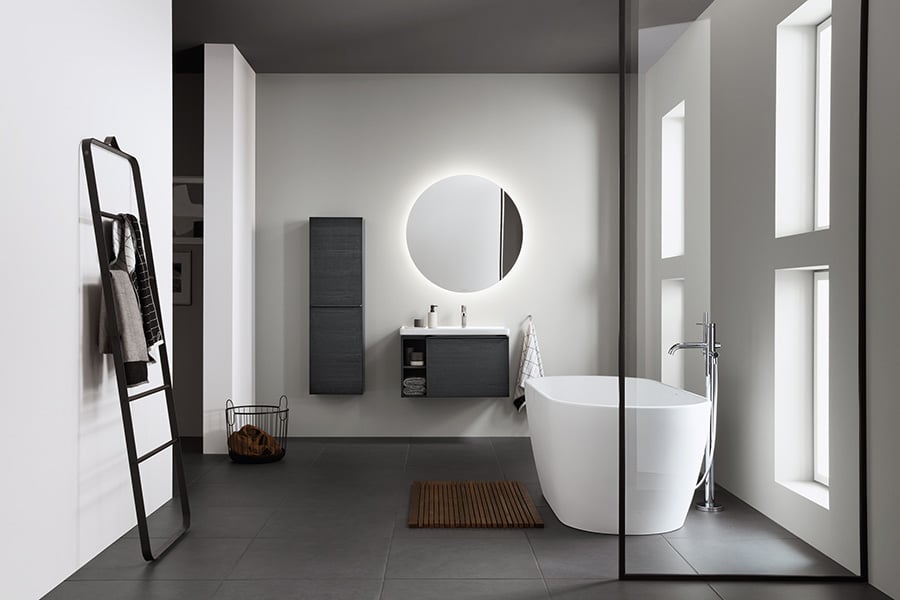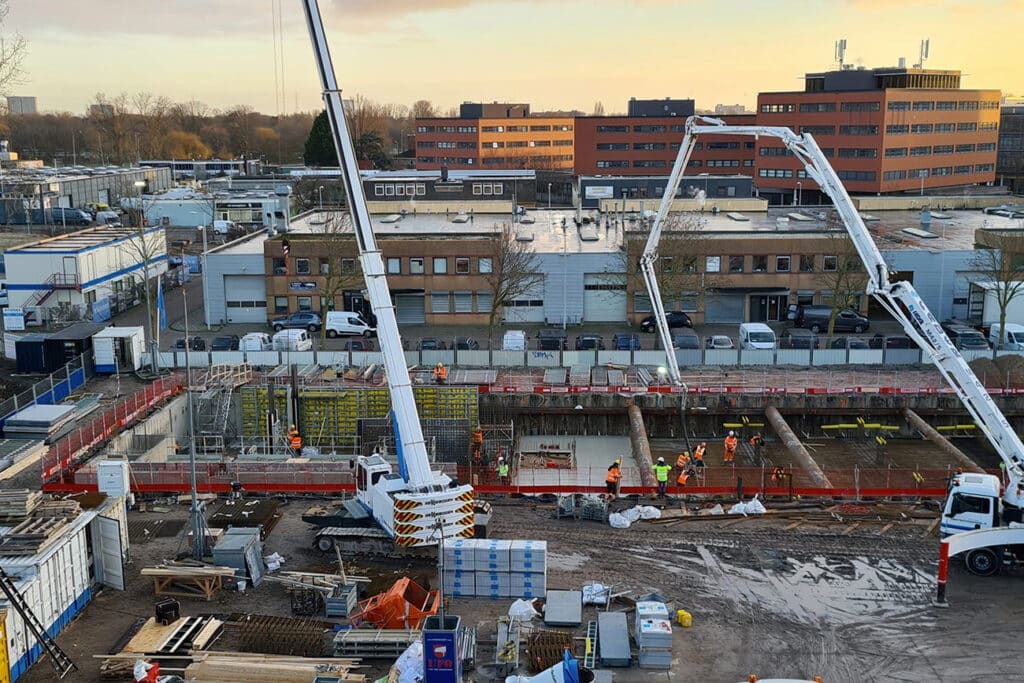
Arrowhead building in the Bay Area
A challenging project with multiple clients and high construction speed. And that too in the middle of the rapidly developing Bajeskwartier in Amsterdam. At the moment, the building is still under construction, but it will eventually house 200 hotel rooms and 280 student housing units. Paul Bos, project manager of Heddes Bouw & Ontwikkeling, explains what the challenges were and what makes this project so beautiful.
Commissioned by Hotel Jansen and De Alliantie Ontwikkeling, Bos is coordinating the construction process of the building, which should be a valuable addition to the rapidly developing area around the old Bijlmer jail. "There will be a learning district with a number of schools. The hotel and student housing fit nicely into that area development. The hotel is primarily longstay, so students will also end up there."
The beauty of repetition
That the clients ended up with Heddes is not surprising. "For De Alliantie we have had the opportunity to realize several projects in the past, so that contact was already there. Projects like this suit us perfectly. Both the hotel and the student housing have a challenging design and a tight deadline. The buildings must open on time for the hotel guests, as well as to provide sleeping quarters for the new crop of students. That requires good organization and a creative approach during engineering and realization, and we can do that well."
That creativity is evident in several elements of the project, such as the bathrooms in the student section. "The rooms are almost all the same. Because of the tight deadline, we started looking for ways to apply the same solution more often. That's how we ended up with Ursem Modular Bouwsystemen' prefabricated bathrooms, which we are installing in all the student rooms. Not only does this reduce construction movements, but these modules also directly facilitate the technical space, which saves a significant amount of time."
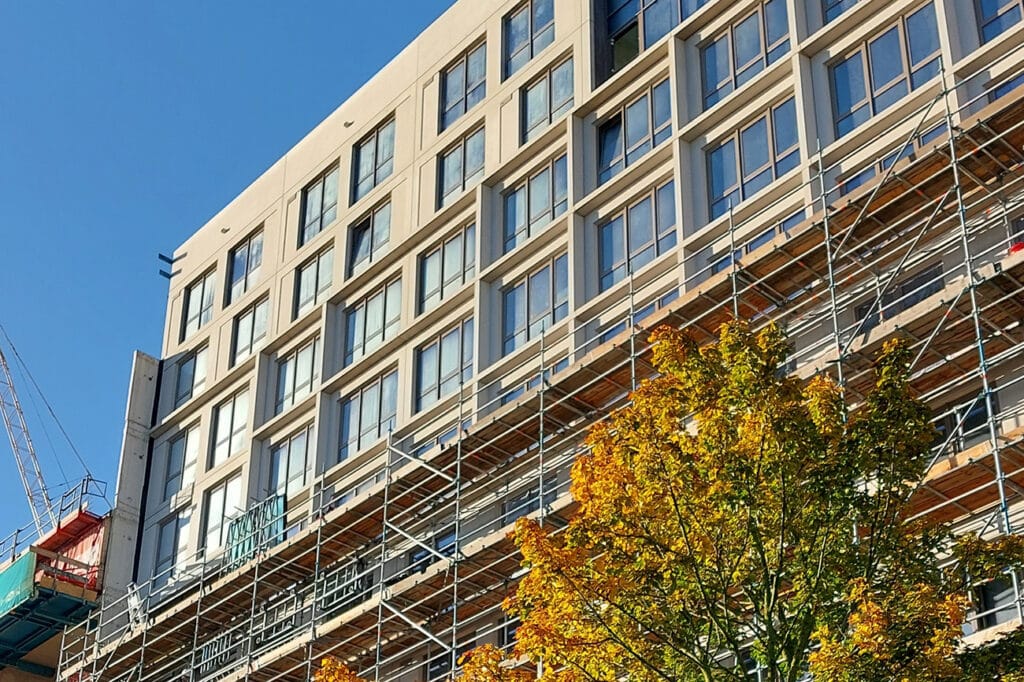
Dealing with interests
The Bajeskwartier project is anything but average, Bos explains. "Part of the building will be a hotel and the other part student housing. That means not only two different clients, but also two target groups. In addition to the clients, we have to deal with all kinds of other parties, such as utility companies that ensure that the building is connected to essential utilities. That requires good coordination, because the two clients have to agree on the end result. Fortunately, that runs like clockwork."
A long run-up
The environment in which the project is being realized caused delays. "The back of the building falls within the Bajeskwartier development area. A lot of attention had already been given to that by the developer. The front, however, is on municipal land. Much less thought had been given to the development of the area there, so we had to solve a number of technical challenges. For example, the entrance was a lot lower than the municipal land we had to connect to. Fortunately, the municipality is now going to work on that so that rainwater does not run into the building."
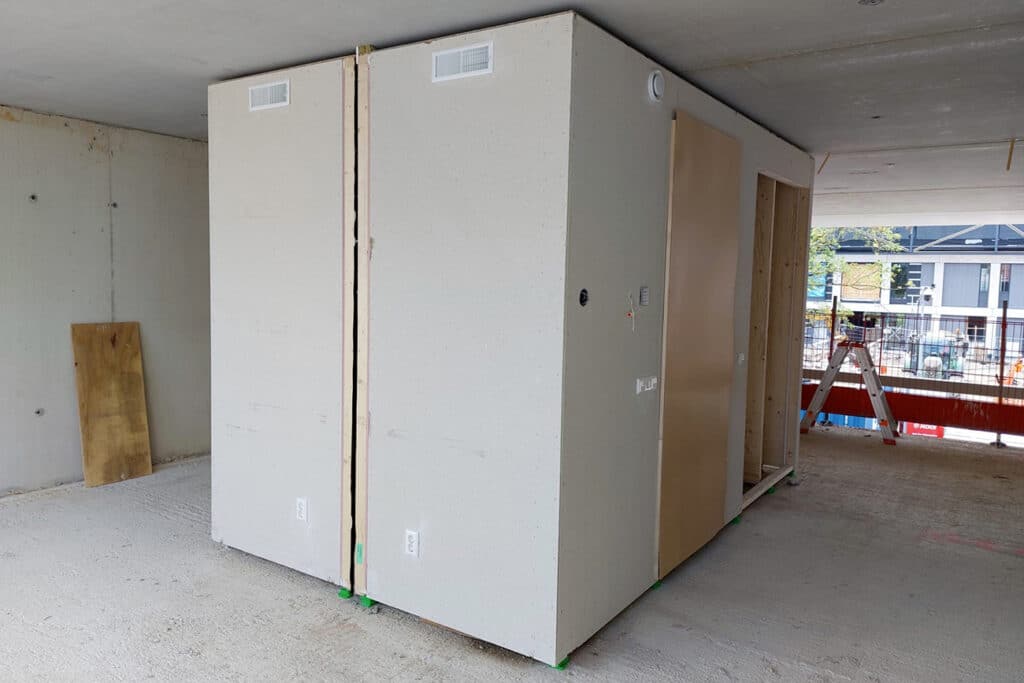
There was a second delaying factor, which caused the run-up to take longer than planned. "We had to wait for research on possible noise pollution. That was only completed after a year, so we moved quickly to start right away. It is great to see that now - one year after we got the green light - we are already delivering the first hotel rooms." Heddes' integrated approach is clearly reflected here. From a collaboration in the construction team phase to a contract and execution, the execution method was already integrally incorporated into the design during the design phase. The structural work is carried out using a tunnel method, after which the facade is closed with prefabricated concrete sandwich elements. This integral approach is the basis of a successful and fast construction process.
I've been working on that!
By now, the building can't be missed when driving down the A10 near Amsterdam, and that makes Bos proud. "It's great to see that the architects' plans are becoming reality. And of course I am then also proud to be able to say: I worked on that!"
